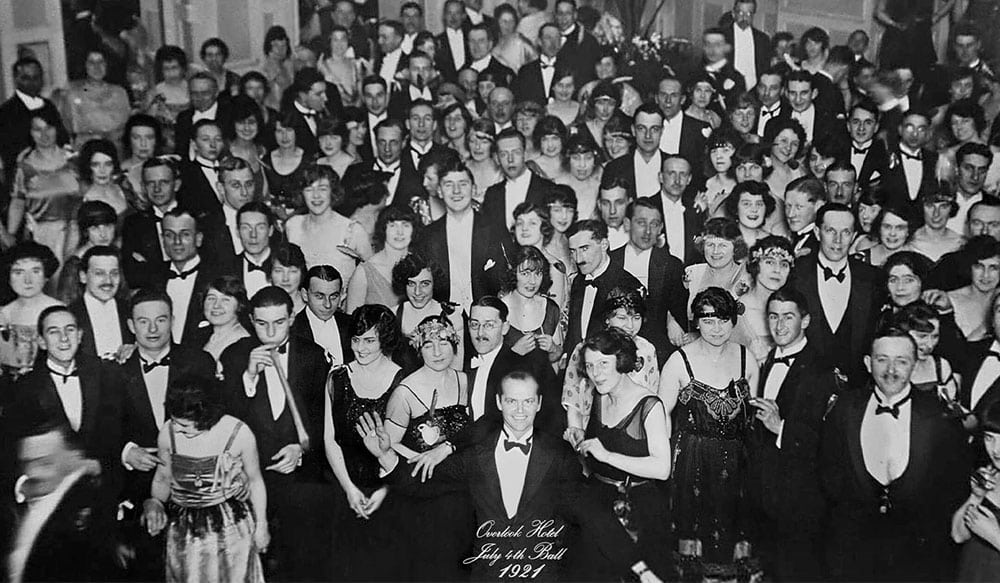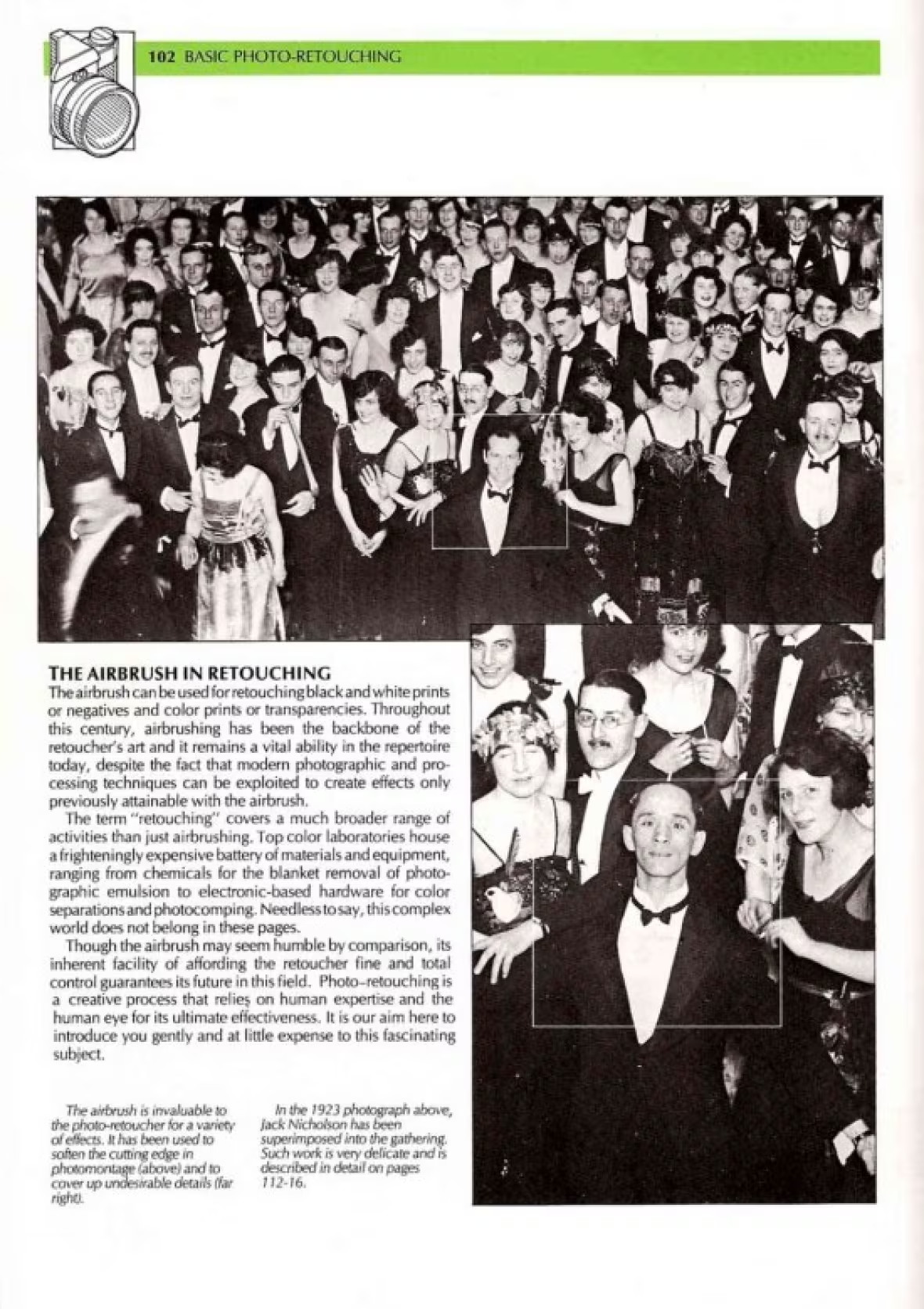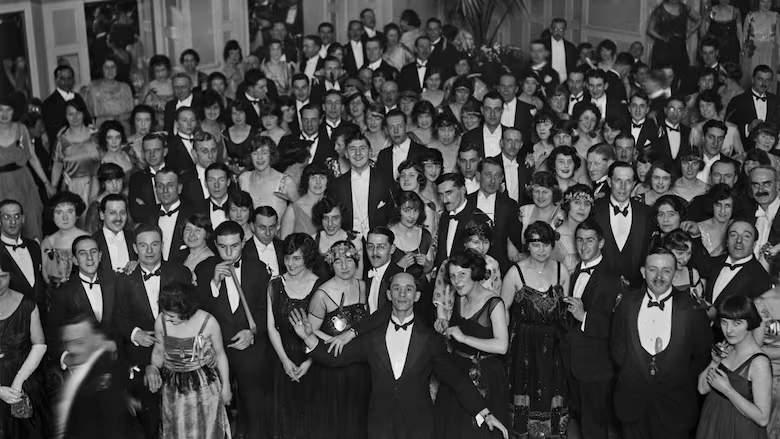
One of the most iconic and unsettling images in horror appears in the final moments of Stanley Kubrick’s 1980 film, The Shining. As the camera slowly zooms in on a black-and-white photograph dated July 4, 1921, we see Jack Torrance — played by Jack Nicholson — smiling among a crowd of partygoers at the haunted Overlook Hotel.
The twist? (Spoiler)
He has always been there. Or so it seems.
This eerie image sealed The Shining’s place in horror history, adding a final shiver to a film already brimming with psychological dread. But for 45 years, one lingering question haunted horror fans and conspiracy theorists alike:
Where did that photograph come from?
It was not staged on set. It was a real photograph, taken decades earlier. But whose body had Nicholson’s face replaced? And where had this celebration actually taken place?
At last, after decades of speculation and mythmaking, the truth has finally been uncovered. And, like many good ghost stories, it is a blend of the tragic, the uncanny, and the strangely human.
The Ghost in the Photo
A cropped version of the original photograph surfaced in 1985 in a book on airbrushing and photo editing. It showed the same scene — minus Jack Nicholson’s face — and confirmed that the image used in the film was a genuine historical photograph. But for years, its origins remained a mystery. Who was the man at the center of the photo, and where had it come from?

From The Complete Airbrush and Photo-Retouching Manual (1985)
It was not until 2024 that a promising lead emerged. A Reddit user ran the image through facial recognition software and identified the man as Santos Casani, a celebrated ballroom dance instructor in 1920s London.
That was enough to catch the attention of Aric Toler, a journalist with The New York Times, and Alasdair Spark, a retired British academic who had long been fascinated by The Shining and its disturbing final image. Toler initially dismissed the match, but Spark was intrigued.
He began examining historical photos of Casani and comparing them with the image from the film. His research uncovered a startling detail: Casani’s real name was John Golman, and he was more than just a dancer.
During World War I, Golman served in the Royal Air Force. He survived a plane crash that left his face disfigured. The reconstructive surgery of the time gave him visible scarring that closely matched the features in the original photograph.
What some viewers had described for decades as a “devilish” or “unnatural” look was, in truth, the face of a wounded veteran who had endured unspeakable trauma.
The final breakthrough came in early 2025 when Spark, with help from Getty Images and photographer Murray Close, located the original glass plate negative in the Getty Archive.
After 45 years, the mystery had finally been solved.
Only then did it become clear just how far the speculation had gone. Some believed the man in the photo was a powerful banker or politician. Others swore he looked sinister or possessed. A few were convinced the image was a hidden commentary on elite corruption or the occult. Its grainy eeriness had invited decades of speculation.
Finding the Ballroom
Identifying the man in the photo was a victory, but one mystery remained. Where was the photo taken, and how did Kubrick’s team find it?
Eventually, Spark contacted Murray Close, the set photographer who had taken the image of Jack Nicholson that was later edited into the scene. Close revealed that the original photograph had actually been sourced from the BBC Hulton Photo Library, now owned by Getty Images.
With this crucial lead, Spark and Toler searched through the Getty archives. After scanning fragile negatives, they eventually found what they were looking for.
The photo had been taken on February 14, 1921, at a St. Valentine’s Day dance and ballroom competition in the Empress Rooms at the Royal Palace Hotel in Kensington, London. The image, shows Londoners enjoying a night of music, dancing, and celebration. At the center of it all, arms open wide, stands Santos Casani. A moment of joy, frozen in time. Immortalized in one of cinema’s darkest and most haunting moments.
The Royal Palace Hotel, constructed in 1892–93, was demolished in the early 1960s. The site is now the Royal Garden Hotel.

Royal Palace Hotel, around 1958
Ordinary People, Immortalized in Horror
Perhaps the most surprising discovery was how ordinary the photo turned out to be.
For years, fans imagined it contained celebrities, politicians, financiers, and even members of secret societies. But as Spark pointed out, there are no symbols in the photo, no subliminal messages. Simply ordinary Londoners, gathered for a Valentine’s Dance, dressed in their finest.
“If these people only knew their group photo would become an iconic prop in one of the greatest horror films of all time…” one fan wrote after the image resurfaced.

Royal Palace Hotel, Kensington, London, 14th February 1921. In the middle Santos Casani, a.k.a. John Golman.
The photo’s power comes not from who appears in it, but from what it became. A moment lifted from history and transformed into a ghost story. A portal between fact and fiction, where myth takes hold.
A Final Toast to the Dead
The mystery of The Shining’s final photo has fascinated and unsettled viewers for generations. What began as a cryptic moment in a horror film grew into a decades-long search for answers. The investigation led through conspiracy theories, forgotten archives, and the life of a war-scarred dancer whose image lingered in the shadows.
Now the truth is known. The names have been recovered. The place and time revealed.
And yet, understanding the story behind the photo does not make it any less haunting. If anything, it makes it more so.
The ballroom may have faded into history. The music stopped long ago. But the photo remains.
